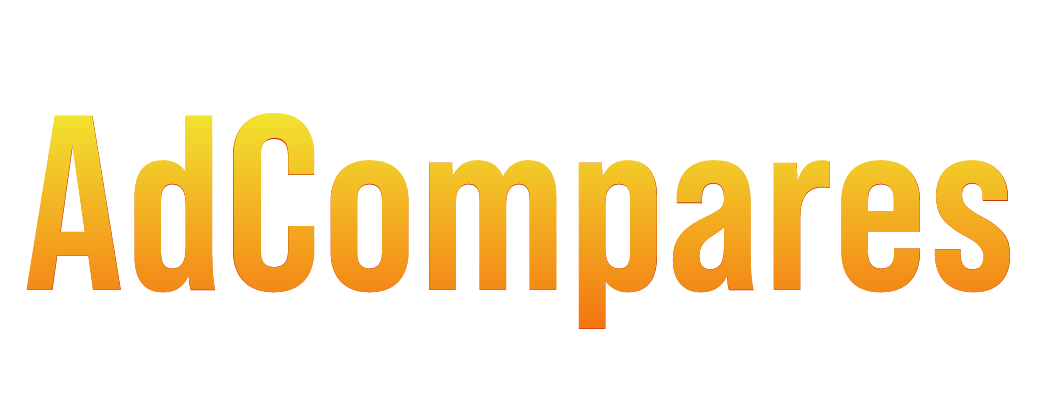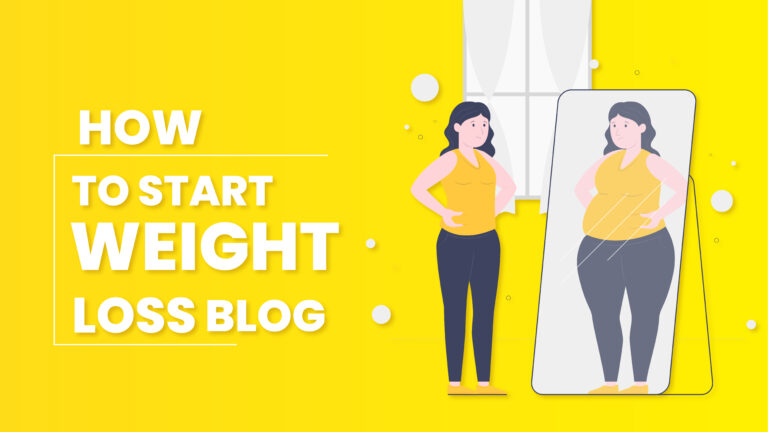Starting a weight loss blog in 2025 requires strategic planning and execution. A well-structured blog shares valuable insights and helps readers on their weight loss journeys. This guide will walk you through every essential step to create a successful weight loss blog.
How to Start a Weight Loss Blog (In Easy Steps)
Define Your Niche
To define your niche, consider the specific areas within weight loss that resonate with you. Niche selection shapes your audience and establishes your blog’s focus. Here are some potential niches:
- Fitness: Focus on workout routines, exercise tips, and fitness challenges. Explore various types of workouts, from high-intensity interval training (HIIT) to yoga. Share personal experiences with different exercise regimens to build credibility.
- Nutrition: Share meal plans, healthy recipes, and dietary advice. Discuss different diets such as keto, paleo, or Mediterranean. Provide insights into meal prepping and how to read nutritional labels effectively.
- Mindset and Motivation: Discuss the mental aspects of weight loss, including motivation, self-discipline, and overcoming obstacles. Explore techniques like visualization, goal setting, and mindfulness. Share success stories to inspire your readers.
- Weight Loss Technology: Review apps, devices, and online programs that support weight loss efforts. Discuss emerging trends in fitness technology, such as wearable fitness trackers and health monitoring apps.
- Specific Demographics: Tailor content for particular audiences, such as busy professionals, parents, or seniors. Address their unique challenges and provide practical solutions.
Choose a Blogging Platform
To choose a blogging platform, evaluate various options based on ease of use, features, and scalability. Popular platforms include:
- WordPress: Known for its flexibility, customization options, and extensive plugin support. It allows you to create a fully functional site with various themes.
- Wix: Offers user-friendly drag-and-drop features, making it ideal for beginners. It provides hosting, design templates, and SEO tools in one package.
- Blogger: A free platform suitable for simple blogging. It allows for basic customization and easy integration with Google services.
- Squarespace: Known for its elegant templates and design flexibility. It provides built-in analytics and e-commerce capabilities, making it suitable for bloggers who wish to sell products.
- Medium: A platform focusing on writing and storytelling. It’s less customizable but provides built-in readership and engagement tools.
Selecting the right platform impacts your blog’s functionality and future growth. Ensure the platform supports your long-term goals.
Select a Domain Name
To select a domain name, aim for a name that is memorable, relevant, and easy to spell. Consider these guidelines:
- Keyword Relevance: Include keywords related to weight loss, fitness, or health. This helps with SEO and makes your blog’s purpose clear. For example, a name like “HealthyWeightJourney.com” immediately conveys your focus.
- Memorability: Choose a name that is catchy and easy to remember. Avoid complex spellings or numbers that could confuse potential visitors.
- Branding: Ensure it aligns with your blog’s theme and tone. Your domain name should reflect your unique voice and mission.
- Availability: Check domain availability using registrars like GoDaddy or Namecheap. Aim for a .com extension, as it is the most recognized and trusted by users.
The domain name serves as your blog’s identity, representing your brand to potential readers. A well-chosen name can enhance credibility and attract visitors.
Set Up Your Blog
To set up your blog, follow these essential steps:
- Register Your Domain: Purchase your chosen domain name through a reliable registrar. Look for competitive pricing and additional services like privacy protection.
- Choose a Hosting Provider: Select a reputable hosting provider that meets your needs. Consider factors such as uptime, speed, customer support, and scalability. Popular hosting options include Bluehost, SiteGround, and HostGator.
- Install Your Blogging Platform: Follow the hosting provider’s guidelines to install WordPress or your chosen platform. Most hosting services offer one-click installations for ease of setup.
- Choose a Theme: Select a theme that reflects your niche and personal style. Look for responsive designs that work well on mobile devices. Many platforms offer free and premium themes, so choose one that fits your vision.
- Customize Your Blog: Adjust your blog’s layout, colors, fonts, and navigation menus to create a cohesive look. Ensure that your design is user-friendly and enhances the reading experience.
- Install Essential Plugins: If using WordPress, install plugins for SEO, social sharing, analytics, and security. Essential plugins include Yoast SEO, Akismet, and Google Analytics.
Proper setup lays the foundation for your blog, ensuring smooth operation and a positive user experience. An optimized setup increases your chances of success in the competitive blogosphere.
Create Quality Content
To create quality content, focus on the following aspects:
- Research Topics: Identify trending topics in the weight loss space using tools like Google Trends, BuzzSumo, and keyword research tools. Explore questions your target audience frequently asks.
- Write Informative Posts: Aim for engaging, factual articles that provide actionable advice. Structure your posts logically, starting with an introduction, followed by the body, and concluding with a summary or call to action.
- Use Visuals: Incorporate images, infographics, or videos to enhance understanding. Visuals make content more engaging and help break up text, making it easier to digest.
- Create a Content Calendar: Plan your content in advance using a content calendar. This helps you stay organized and ensures consistent posting.
- Update Existing Content: Regularly review and update older posts to keep them relevant. This enhances user experience and maintains search engine rankings.
Quality content influences reader retention and engagement. Well-researched and well-written posts attract more visitors, establish credibility, and foster loyalty.
Optimize for SEO
To optimize for SEO, implement these strategies effectively:
- Keyword Research: Use tools like SEMrush, Ahrefs, or Ubersuggest to identify relevant keywords. Focus on long-tail keywords that reflect user intent and are less competitive.
- On-Page SEO: Incorporate keywords naturally in titles, headings, and throughout the content. Ensure that your meta descriptions are compelling and accurately summarize your posts.
- Image Optimization: Use descriptive file names and alt tags for images. This helps search engines understand your content and improves accessibility for visually impaired users.
- Backlinking: Aim to get backlinks from reputable sources within your niche. Guest blogging, collaborations, and networking can enhance your authority and improve search rankings.
- Mobile Optimization: Ensure your blog is responsive and loads quickly on mobile devices. Google prioritizes mobile-friendly sites in its search results.
Effective SEO increases visibility in search engines. This leads to higher traffic, better audience engagement, and ultimately, increased success for your blog.
Promote Your Blog
To promote your blog, utilize various channels effectively:
- Social Media: Share your posts on platforms like Instagram, Facebook, Twitter, and Pinterest. Tailor your content to fit each platform’s unique audience.
- Email Marketing: Build a mailing list using tools like Mailchimp or ConvertKit. Send regular newsletters with updates, new posts, and exclusive content to keep subscribers engaged.
- Networking: Connect with other bloggers and influencers in the weight loss niche. Collaborations can lead to guest posts, shoutouts, and cross-promotion.
- Online Communities: Join forums, Facebook groups, and Reddit threads related to weight loss. Engage with users, answer questions, and share your blog where appropriate.
- SEO and Paid Ads: Invest in SEO strategies and consider paid advertising options like Google Ads or Facebook Ads to reach a broader audience.
Promotion expands your reach and enhances visibility. Engaging with your audience on multiple platforms fosters community and loyalty.
Engage With Your Audience
To engage with your audience effectively, consider these actions:
- Respond to Comments: Show appreciation for feedback and answer questions promptly. Engaging with readers builds trust and encourages further interaction.
- Create Polls and Surveys: Use tools like Google Forms or social media polls to gain insights into topics your audience cares about. This informs your future content strategy.
- Host Webinars or Live Q&As: Offer valuable interactions that encourage community involvement. Live sessions allow you to connect personally with your audience.
- User-Generated Content: Encourage readers to share their weight loss journeys or success stories. Feature these on your blog to foster a sense of community and inspire others.
Audience engagement builds relationships. This connection enhances trust and encourages repeat visits, ultimately benefiting your blog’s growth.
Analyze Performance
To analyze performance effectively, utilize analytics tools like Google Analytics and social media insights. Focus on these key metrics:
- Traffic Sources: Understand where your visitors come from. Analyze organic search, social media, and referral traffic to refine your promotional strategies.
- Bounce Rate: Assess how many visitors leave without interacting. A high bounce rate may indicate that your content needs improvement or better alignment with user intent.
- Content Performance: Identify which posts generate the most interest. Focus on creating similar content that resonates with your audience.
- Conversion Rate: Track how many visitors take desired actions, such as subscribing to your newsletter or purchasing a product. Optimizing your calls to action can enhance conversion rates.
Performance analysis informs future strategies. This data-driven approach helps refine your content, improve engagement, and ultimately drive growth.
Monetize Your Blog
To monetize your blog, explore various avenues strategically:
- Affiliate Marketing: Promote relevant products and services related to weight loss. Earn commissions on sales generated through your unique affiliate links.
- Sponsored Posts: Collaborate with brands to create sponsored content. Ensure that the products align with your values and resonate with your audience.
- Digital Products: Create and sell e-books, meal plans, or workout guides. Offering value through digital products can generate additional income.
- Online Courses: Develop courses that provide in-depth knowledge on specific topics, such as meal planning or exercise routines. Platforms like Teachable or Udemy can help you get started.
- Ad Networks: Join ad networks like Google AdSense to earn money through display ads on your blog.
Effective monetization strategies align with your blog’s purpose and audience interests. Consider the needs of your readers while implementing these approaches.
Conclusion
Starting a weight loss blog in 2025 can be a fulfilling journey that allows you to share your passion and knowledge with others. By defining your niche, creating quality content, and engaging with your audience, you can build a successful blog that inspires and motivates readers on their weight loss journeys. With dedication and consistent effort, your blog can become a trusted resource in the weight loss community.
What niche should I choose for my weight loss blog?
Choose a niche that aligns with your interests, such as fitness, nutrition, or mindset.
How can I promote my weight loss blog?
Use social media, email marketing, and guest posting to reach a broader audience.
What tools can help me with SEO?
Consider using tools like SEMrush, Ahrefs, or Yoast SEO for optimization.
How can I monetize my weight loss blog?
Explore affiliate marketing, sponsored posts, and selling digital products.
What type of content should I create for my blog?
Focus on informative, engaging posts that provide actionable advice related to weight loss.

